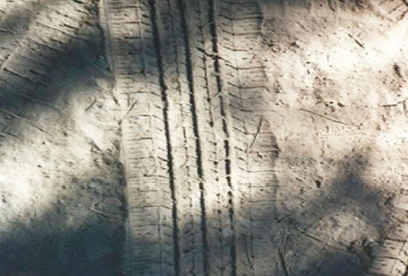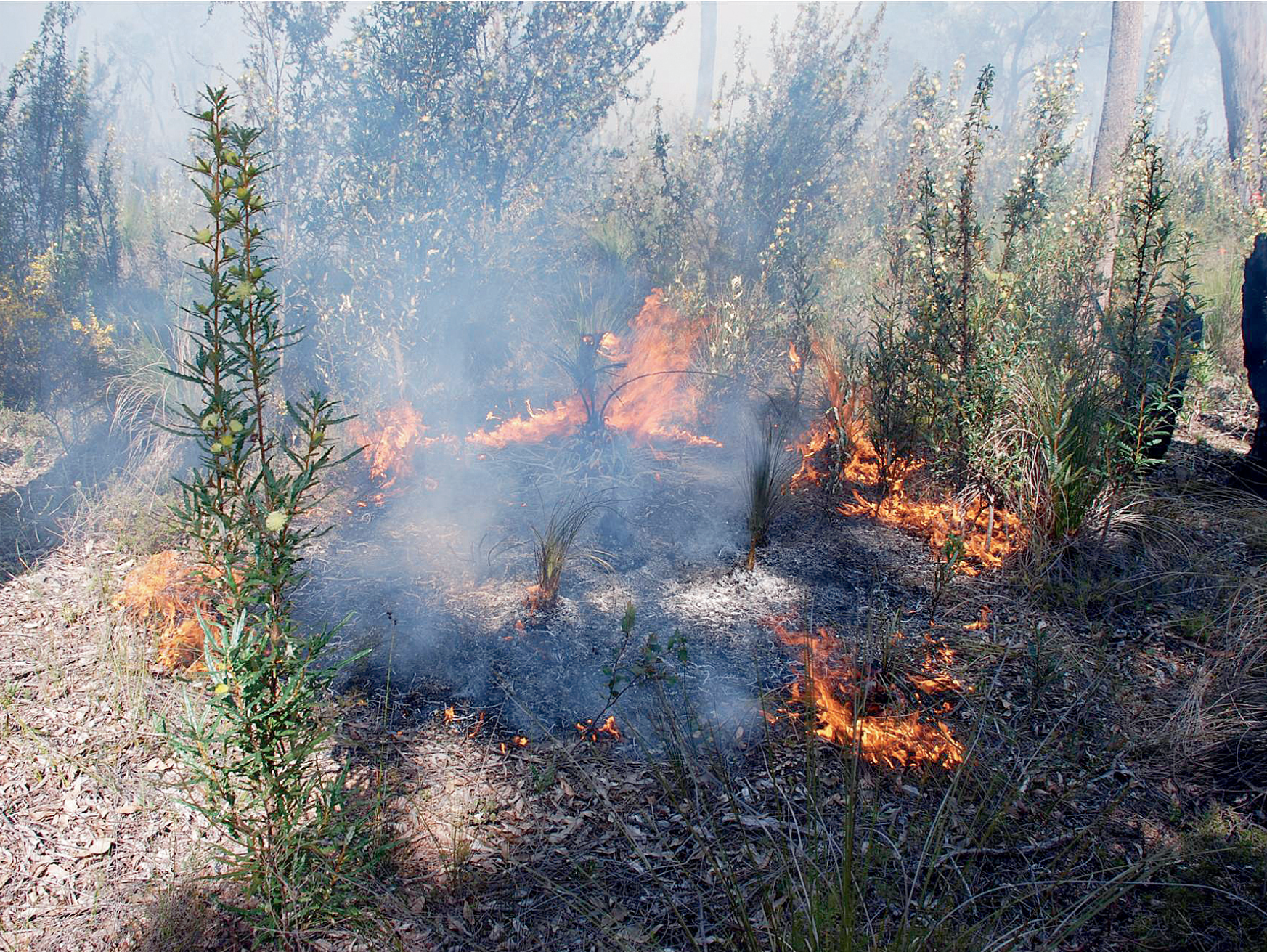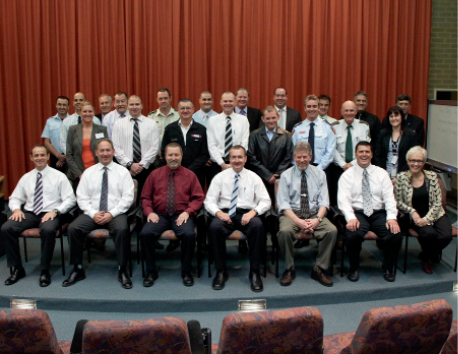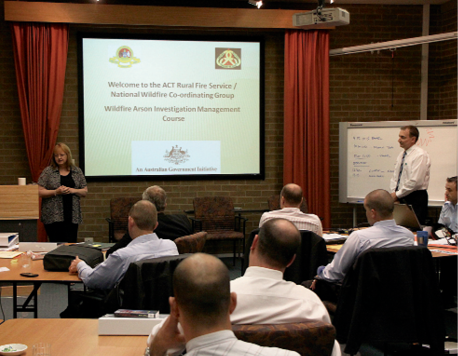
Richard Woods discusses a landmark course on wildfire arson investigation methods for Australia and New Zealand.
Traditionally, people assumed the investigation of deliberately-lit wildfires was an issue solely for police agencies to address. While a task force approach in some States (eg. Strikeforce TRONTO in New South Wales, Operation Nomad in South Australia), has enhanced wildfire investigations, this method relies heavily on police to solve crimes. In addition, several States and Territories have had successful prosecutions of wildfire arsonists in recent years, but the challenge of successfully prosecuting persons responsible for deliberately lighting wildfires continues across Australia.
More importantly, the majority of wildfires that breakout across Australia do not result in property loss, injury or death, hence there is a tendency for them to not be thoroughly investigated; particularly when ‘wildfire arson task force arrangements’ are not in place. Agencies generally do not give high priority to investigating these ‘nuisance fires’ due to workload priorities of police and fire agencies. However, as statistics indicate, wildfires mostly occur at the hand of arsonists and do not develop into major conflagrations—due to the conditions at the time (e.g., prevailing mild weather, fuel condition, fire agency intervention etc. State and Territory fire agencies respond to ‘minor’ fires on a regular basis. Consequently, wildfires make up a large percentage of these agencies’ response costs.
Furthermore, experience has shown that the collation of wildfire arson intelligence is often ‘siloed’ between fire and police agencies. For example, fire occurrence information is often not readily shared between rural fire agencies; urban fire agencies and police agencies, due to differing information management systems and processes.
The issues outlined above result in the camouflaging of the wildfire arson problem. Consequently, agencies employ limited co-ordinated effort to investigate these (mostly ‘minor’) deliberately-lit fires. Ultimately this creates a challenge for investigation collaboration and has a direct influence on conviction rates...
“Between 2001-2005 in Victoria: 55 persons were convicted of arson (structural & wildfire). Between 2001-2005 in New South Wales: 26 persons were convicted of wildfire arson. Both States had 27,000 bushfires between them in 2004. If half were due to arson, the identification and conviction rate is 4:1000 fires.” (data from Australian Institute of Criminology).
Additionally, the Federal Attorney General’s Forums on Wildfire Arson in 2009/2010 identified the need for Police and Fire Services Investigators to share intelligence and mutually approach the investigation of wildfires as a significant priority.


The North American Wildland Fire Investigation course helps agencies share investigation methodologies.
The North American Wildland Fire Investigation Case Development Course was developed to provide Police and Fire Service fire investigators with an understanding of serial wildfire arson and how to tackle it in a joint approach context. Developed by the National Wildfire Co-ordinating Group (NWCG) and well received in the USA and Canada, this newly adopted course has been directly responsible for the successful conviction of a number of serial wildfire arsonists in cases across both of these countries (some serial cases extending over 12 years). The underlying focus of the course was to encourage police and fire service investigators to work together, sharing information and identifying offenders.
Based on a similar challenge faced in North America between fire and police agencies, the course identifies ways in which the skills of agency investigators can be combined to lead to more thorough investigations. Course presentations apply joint approaches to serial wildfire arson investigations and involve the use of real-life serial arson cases, using intelligence made available to investigators at the time of the fires and exposure to the brief of evidence and conviction of a serial arsonist in the USA.
Broadly, the objective of the course is to provide students with tactical skills that will assist them to:

Deliberately lit fires do not usually result in property loss, injury or death.
In 2009 the ACT Rural Fire Service (ACTRFS), recognised that the North American course could assist in addressing the wildfire arson issue in Australia and New Zealand. The ACTRFS hosted a pilot course in Canberra later that year.
Three USA based trainers, Paul Steensland, Retired Senior Special Agent, US Forest Service, Alan Carlson, Chief Investigator with Calfire and Jeff Bonebrake, Oregon Department of Forestry, assisted in the delivery of the pilot course along with Supt. Richard Woods of the ACT Rural Fire Service.
A sample group of Police and Fire Agency Investigators from across Australia and New Zealand attended with a view to verifying the content for local application. These representative groups included: the New Zealand Rural Fire Service; Fire and Emergency Service Authority of Western Australia; Australian Institute of Criminology; Victoria Police; South Australia Police; Country Fire Authority Victoria; Tasmania Fire Service; Country Fire Service South Australia; Queensland Fire & Rescue Service; Department of Conservation Western Australia; Australian Federal Police; ACT Fire Brigade; NSW Rural Fire Service; and the Australian Government’s Attorney General’s Department (AGD).

Group attending the pilot course at AEMI.

Formal education session at pilot course.
Attendees provided an overwhelmingly positive response to the course and a number of key issues and initiatives were identified to ensure the on-going suitability of the course in the Australia and New Zealand environments:
The revised content is based on the original intent of the course and will promote best practice from across Australian/New Zealand wildfire arson investigation models and will include:

Interaction between agencies in pilot course.
The hosting of the course by the ACT Rural Fire Service and the need for its subsequent refinement was acknowledged and endorsed at the 2010 Australian Government’s Attorney General’s Bushfire Arson Prevention Forum and reaffirmed as a priority for development as an Action Point in the ‘National Work Plan to reduce Bushfire Arson in Australia’. The Federal Attorney General’s Department subsequently allocated funds via the National Emergency Management Projects to develop the course in 2010/11 to enhance its content and application.
A number of key briefings and information overviews on the course and proposed development have been provided to key stakeholders across Australia and New Zealand. These have included AFAC, the NSW, Queensland and Victorian Association of Fire Investigators Conference in Sydney in 2010, the Australia New Zealand Policing Advisory Agency and the 2010 Federal Attorney General’s Arson Prevention Forum. Finally, the second pilot course will provide an opportunity for key feedback from investigators at the State and Territory agency level.
No similar course is currently available in Australia. The final version of this training course intends to provide State/Territory fire and police agency wildfire investigators with an opportunity to be exposed to best practice methodology and the latest in wildfire investigation techniques. As a ‘specialist short course’ it will be offered to specialist investigators from fire and police agencies managing serial wildfire investigations.
The problem of wildfire arson is very real across Australia and New Zealand. Importantly, the community expects it to be addressed and for arsonists to be detected and placed before the courts. Enhancing the skills of fire and police agency investigators in this challenging field, will ultimately benefit their ability to detect and prosecute wildfire arsonists. This course will go a long way to making our wildfire prone communities safer from this crime.
Richard Woods is Operations Manager of the ACT Rural Fire Service. As Manager for Fire Investigation for NSW Rural Fire Service he as instrumental in Strikeforce ‘Tronto’ investigating the cause of major bushfires across NSW. He has also held positions in the Shoalhaven district and was a Police Officer in NSW for over 9 years. He has been involved in study tours and presented training and conference papers in North America. More recently he has been working with the Federal Attorney Generals’ Department in Canberra tasked to develop National Bushfire Arson Prevention standards.
He is the current Chair of the International Association of Arson Investigators, Wildland Arson Committee; Australian representative of the North American based National Wildfire Co-ordinating Group Wildland Fire Investigation Team and is a former President of the NSW Chapter (47) of the International Association of Arson Investigators. Richard can be contacted at richard.woods@act.gov.au